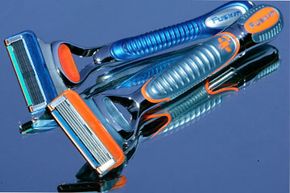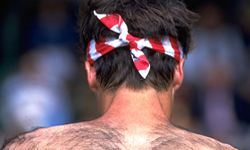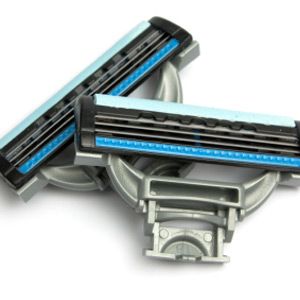Hold the shaving cream. You can now shave with up to five blades. That's how many are on the Gillette Fusion razor for men. For good measure, the Fusion adds another blade on the back of the razor for sideburns and mustaches. All those blades aren't just for men. Women also can wield a five-blade razor, such as the Gillette Venus Embrace, on whatever needs shaving.
Why do you need all those blades? In commercials for the Fusion, Derek Jeter and Tiger Woods don't say much. They simply knock three-blade razors out of men's hands. Ads for the Venus Embrace let women know that the razor will help them to reveal their inner goddesses. The "Goddess of the Hunt" featured in one commercial somehow can't find good shoe deals without shaving with five blades.
Advertisement
Many of us are practical people. We want to shave less often, without irritating or cutting ourselves. If we're using evidence rather than marketing to guide us, it's hard to know what to do. Few scientists have bothered to study razor types or blade number and the quality of the shave. The lack of research makes it easy for companies to claim that more blades give the best shave.
Shaving is tricky -- so tricky that more blades just can't solve every issue. It's not like mowing a flat lawn. Our hairy parts have topography. Men have curvy chins and upper lips. Women have long, curvy legs and concave armpits. In fact, razors have different handle designs to deal with the differences between men's and women's curves [source: Draelos 2002].
You also encounter smaller bumps on the road to a smooth shave. The skin around each hair makes a small hill, a bump for the razor to traverse. And forget the idea of your hairs standing straight up. Hair grows in different directions, especially on men's chins and necks. For the least irritation, hair should be attacked in the direction it grows. Even trickier, some hair, like women's leg hair, is thin; other hair, like a mustache, is bristly. The razor should strike them with different amounts of force to slice them cleanly. Shaving, then, is less like mowing the lawn and more like bushwhacking in the jungle.
From what we've gathered, more blades do seem to give a closer shave. You'll find out why we think so next. You'll also find out why blade number seems to matter less than your overall shaving technique for avoiding nicks and irritation.
Advertisement



